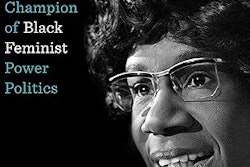Community colleges and baccalaureate institutions have experienced a topsy-turvy ride over the last decade, which included the Great Recession and its enrollment impacts, significant social unrest generated from both sides of the political aisle, and the global COVID-19 pandemic and its aftermath. Against this backdrop, colleges and universities are engaged in significant work to improve outcomes for their students – and to make them more equitable for under-represented students of color. A substantial challenge facing colleges as they seek to achieve this equitable improvement is to identify high-impact strategies through which they can apply their limited human and financial resources, time, and change capacity.
 Dr. Robert. M. Johnstone
Dr. Robert. M. Johnstone
As part of this project — using the Lightcast™ Analyst Tool — we dove deep into regional labor market (LMI) data and used the data to support the colleges’ inquiry process and to ensure that their efforts on (and beyond) the initiative were leading to the living-wage success they imagine for their graduates. As we at NCII have reflected on the importance of this data, we have evolved our approach to using it in all of our project work with colleges – with the goal of helping colleges be transparent with themselves and eventually with students about career paths to, and prospects for, attaining family sustaining wages.
An Illustration of the Power of LMI Data
In a short article, it’s impossible to address the vast number of important issues on which LMI data can shine a light. To support colleges in our projects, we have developed a story-and-slide approach to the data with about a dozen key data slides customized to each college’s unique regional labor market and adjusted to the region’s cost of living. The slides cover issues such as: which occupations have the most and least workers; which pay the most and least; which have grown in the last 3-5 years or are predicted to grow; and what is the strong-as-ever relationship between living wage job attainment and degree attainment.
But perhaps most powerfully, we are able to disaggregate the regional labor market data to find who is in the higher-paying and lower-paying jobs in a region and, in doing so, clearly display inequities in the labor market that higher education and its partners can help address. As an example, consider the five highest-paying and five lowest-paying occupations at the two-digit occupational code level. For a major Midwest metropolitan area, 27% of this region’s workers are Black/Latinx. But in all five of the top-paying occupations the percentage of Black/Latinx workers lags significantly, ranging from 10 to 18 percentage points below the overall worker rate. Concomitantly, Black/Latinx workers are over-represented in four of the five lowest-paying occupations in the region, with the over-representation ranging from 6 to 27 percentage points.
The equity challenge in the labor market is shockingly consistent across the 100 regions we have customized these data for – across red states and blue states, geographic regions, and urban/suburban/rural areas. While the overall percentage of workers who are Black/Latinx in a region varies widely, the under-representation in high-wage jobs and over-representation in low-wage jobs are incredibly consistent.
Explorations and future work
These data are stark and hard to ignore, and that is exactly the point of sharing such an infographic as a foundation for initiating change work to address the gaps. We have also found that with the increasing challenge in various parts of the country of engaging in DEI or equity-based work, such an infographic can be a catalyst to action regardless of how the gaps are described linguistically – as gaps resulting from systemic racism, equity gaps, opportunity gaps, representation gaps, or even just gaps. Hopefully few people would see this graphic and its implications and conclude that the status quo is defensible.
We at NCII are excited about future work centering this labor market data in projects and with colleges. We won't start working with an institution without first running a customized version of this LMI Insight Report, to help colleges sharpen their focus, prioritizing high-impact aspects of the student experience in a change process. The work that follows isn’t linear nor easy, but this grounding in post-graduation success is critically important to ensure our change work is helping students make more informed choices about programs and careers and their relationship to family-sustaining wages.
Dr. Rob Johnstone serves as founder & president for the National Center for Inquiry & Improvement (NCII): Exploring Labor Market Data as a Foundation for Inquiry & Change Work.
The Roueche Center Forum is co-edited by Drs. John E. Roueche and Margaretta B. Mathis of the John E. Roueche Center for Community College Leadership, Department of Educational Leadership, College of Education, Kansas State University.



















